Client engagement letter template
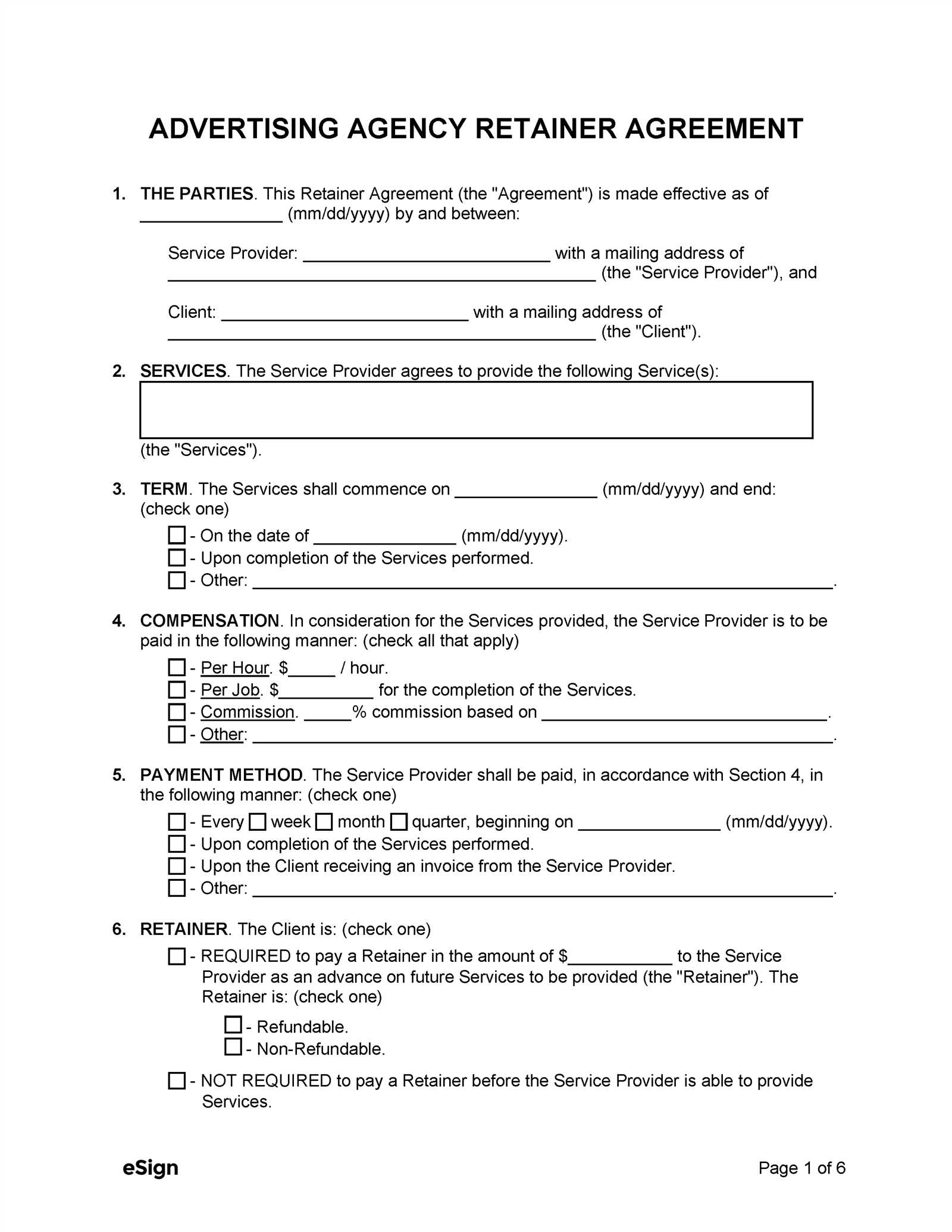
Creating a well-structured client engagement letter is a straightforward process. Begin by clearly outlining the scope of services you are providing. Define the specific tasks or projects you will handle, and set clear expectations regarding the timeline and deliverables.
Include terms of payment right from the start. Be transparent about your rates, any payment milestones, and the preferred method of payment. This helps avoid confusion and ensures both parties are aligned from the beginning.
Don’t forget to include a section on confidentiality, especially if you’re dealing with sensitive information. Make sure both parties understand their responsibilities regarding privacy and how any shared data will be handled.
End the letter with terms for resolving potential disputes. Outline the procedures for addressing any disagreements, whether through mediation or another form of resolution. This can provide peace of mind for both you and your client, knowing there is a clear path forward in case of issues.
Client Engagement Letter Template
Use a clear and straightforward structure for your client engagement letter to avoid misunderstandings. Start by stating the purpose of the engagement, including a brief overview of the services you will provide. Specify the scope and any exclusions to prevent confusion later.
Clarify payment terms, including fees, payment schedule, and any applicable taxes. Be transparent about additional costs that may arise during the course of the engagement, such as travel expenses or materials. Specify the method of payment and due dates to ensure both parties are on the same page.
Outline the duration of the engagement, including start and end dates. Mention any deliverables or milestones, and establish timelines for completion. If applicable, set expectations for follow-up meetings or communication throughout the process.
Ensure confidentiality by adding a clause that protects sensitive information. Define how data will be handled and who will have access to it. Address how confidentiality will be maintained after the engagement ends.
Include a dispute resolution clause in case issues arise. Specify how disputes will be resolved, whether through mediation, arbitration, or another method. Be sure to define the jurisdiction that will apply to legal matters.
Finally, provide space for both parties to sign and date the document. Include a statement that both parties agree to the terms outlined in the letter, ensuring mutual understanding and consent before proceeding.
Crafting a Clear Agreement for Client Expectations
Set clear boundaries and define roles from the outset. Detail the scope of services and responsibilities to prevent any confusion later on. Specify the deliverables, timeline, and expected results. Include measurable metrics to ensure that both parties know exactly what success looks like.
Outline Specific Deliverables
Break down tasks into manageable parts. List out each deliverable and set realistic deadlines for completion. This will help both sides track progress and hold each other accountable.
- Service/Product A: Delivery Date
- Service/Product B: Milestones
- Final Outcome: Expected Results
Establish Communication Guidelines
Define how often and through which channels communication will take place. Clarify the response time expected from both sides and the method for escalating issues if needed.
- Email Response Time: 24 hours
- Weekly Check-in Calls: Every Monday at 10 AM
- Escalation Procedure: Direct contact with project manager if unresolved within 48 hours
By setting clear expectations and agreeing on deliverables and communication, you pave the way for a smooth and productive collaboration.
Outlining Key Terms and Deliverables in the Contract
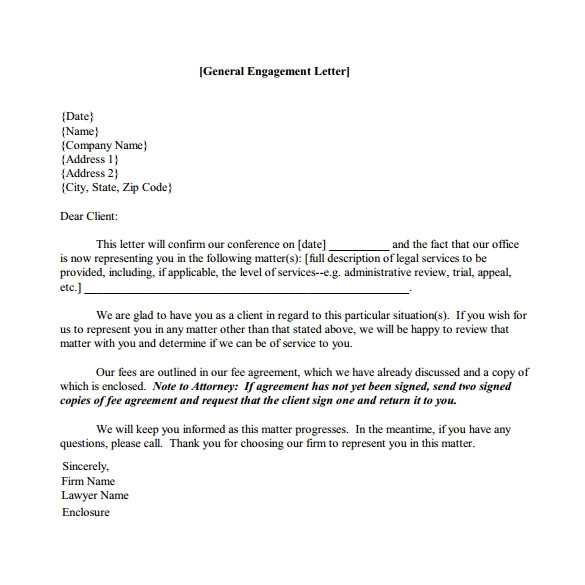
Clearly define the scope of work and set precise expectations by outlining key terms and deliverables in the contract. This will help both parties understand their responsibilities and reduce any ambiguity.
Key Terms to Include
Identify specific timelines, payment schedules, and conditions for changes or cancellations. These terms ensure both parties are aligned on the contractual framework. Also, include detailed descriptions of any services, products, or milestones to avoid confusion down the line.
Defining Deliverables
Clearly list the deliverables to avoid misunderstandings. Include descriptions, timelines for each deliverable, and any required approvals or checks before moving on to the next stage. Be specific with measurable outcomes to gauge progress.
| Deliverable | Description | Timeline | Approval Process |
|---|---|---|---|
| Project Plan | Detailed document outlining the project phases, resources, and timelines. | 5 days after contract signing | Client review and approval |
| Prototype | Working model demonstrating the product features and functionality. | 30 days from project start | Feedback and modifications based on client input |
| Final Product | The complete product ready for delivery to the client. | 60 days from project start | Client final inspection and sign-off |
Setting Boundaries: Defining Roles and Responsibilities
Clearly define roles to prevent misunderstandings. Ensure both parties know their obligations, the scope of the work, and any limits. Outline specific duties, timelines, and expectations in a concise manner. Use a simple structure that clearly separates what the client is responsible for and what your team will handle. This avoids confusion and sets a professional tone.
Clarify Responsibilities
Start by specifying the tasks that each party must fulfill. For example, if the client is expected to provide materials or information, clearly state the deadlines and format. Your team’s role should be described in detail, including deliverables and deadlines. Transparency ensures both parties understand their contributions to the project.
Define Boundaries for Communication
Set limits on how and when communication will occur. Specify whether communication should be via email, phone, or other platforms, and establish working hours. If urgent matters arise, outline the procedure for escalation. This helps maintain focus and efficiency throughout the project, preventing unnecessary disruptions.
Ensuring Legal Protection with Proper Disclaimers
Clearly outline your responsibilities and limits in the client engagement letter. Ensure that disclaimers address potential risks, such as misunderstandings regarding the scope of work, timelines, or specific limitations of service. Specify what you do and don’t cover to prevent future disputes.
Clarify Liability Limitations
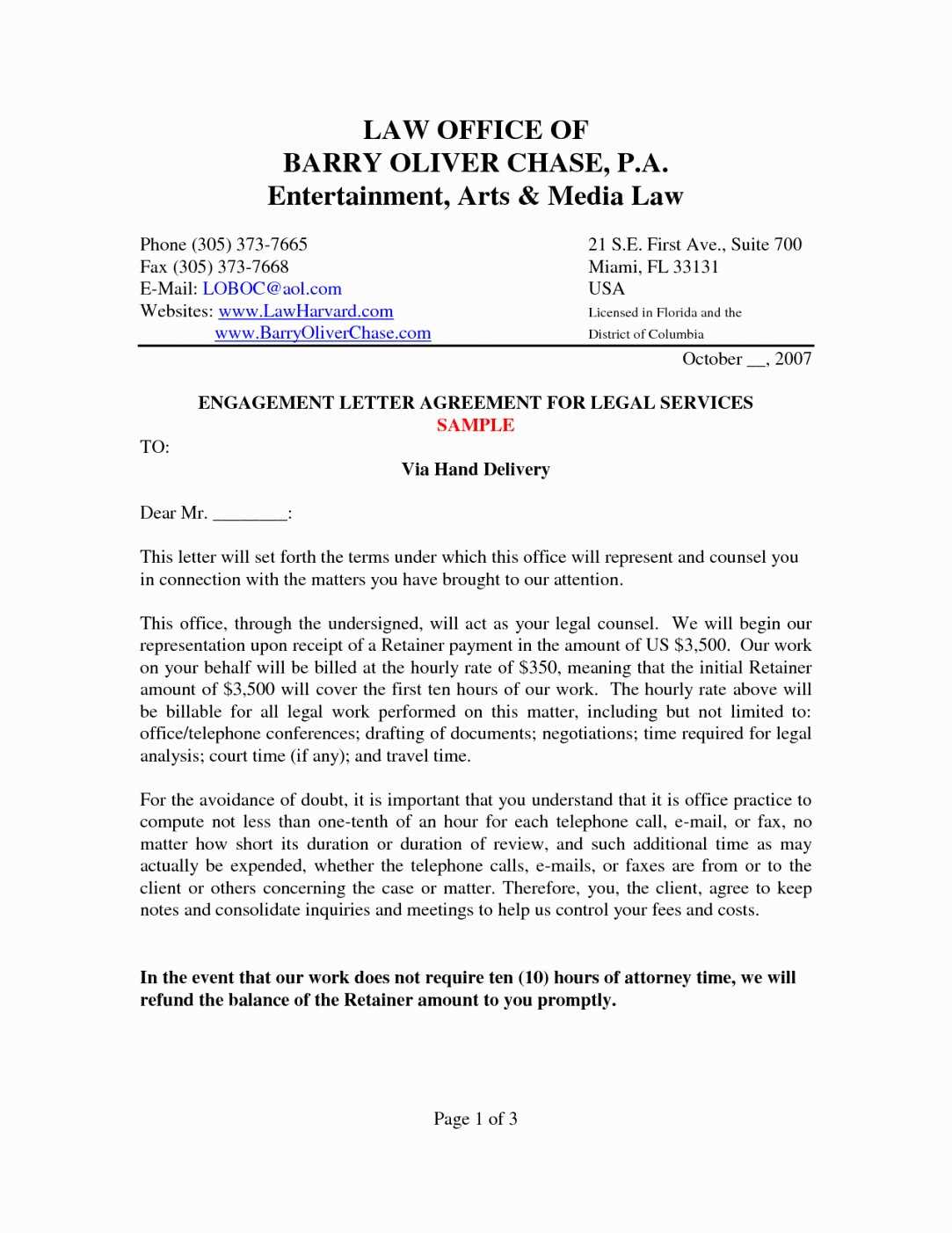
State the limits of your liability in case of errors or omissions. This can be done by clearly indicating that your firm is not liable for indirect or consequential damages. This helps set realistic expectations for the client and provides a safeguard for unforeseen issues.
Include Non-Reliance Clauses
Avoid being held accountable for third-party actions or information outside the scope of the engagement. Clearly indicate that the client should not rely on advice beyond the services you explicitly offer, which reduces the risk of liability for misinterpretation or misuse of your guidance.
Personalizing the Template for Specific Client Needs
Adjust the client engagement letter to match the specifics of each client’s situation. This ensures that the document reflects the unique scope of services, expectations, and goals of the project. Focus on tailoring sections to include precise details relevant to the client’s industry, legal requirements, or particular requests.
1. Modify Terms and Conditions Based on Client Type
Clients may have varying needs, so adjust the terms accordingly. For instance, a corporate client might require more detailed clauses on confidentiality and data protection, while an individual client might have simpler requirements. Customize these areas based on the client’s size and business complexity.
2. Reflect Client-Specific Expectations and Deliverables
Incorporate key milestones, deadlines, and deliverables that align with the client’s goals. Clearly define what is expected at each stage of the project, including payment schedules and any specific requirements. This will prevent any misunderstandings and set clear, mutual expectations from the outset.
3. Include Client-Specific Legal Considerations
- If working with a client in a regulated industry, adjust the compliance and regulatory clauses to reflect their specific legal obligations.
- For international clients, ensure the agreement includes relevant terms about jurisdiction, dispute resolution, and cross-border legal considerations.
4. Tailor Payment Terms to Client Preferences
Some clients may prefer different payment structures, such as installment plans, upfront payments, or hourly billing. Customizing these sections can make the contract more flexible and appealing to the client while also protecting your business interests.
5. Customizing Confidentiality and Non-Disclosure Agreements
Adjust confidentiality clauses to suit the client’s industry. For example, a technology firm may require strict intellectual property protection terms, while a consulting client might need confidentiality limited to specific documents or information.
6. Update Communication Guidelines Based on Client Preferences
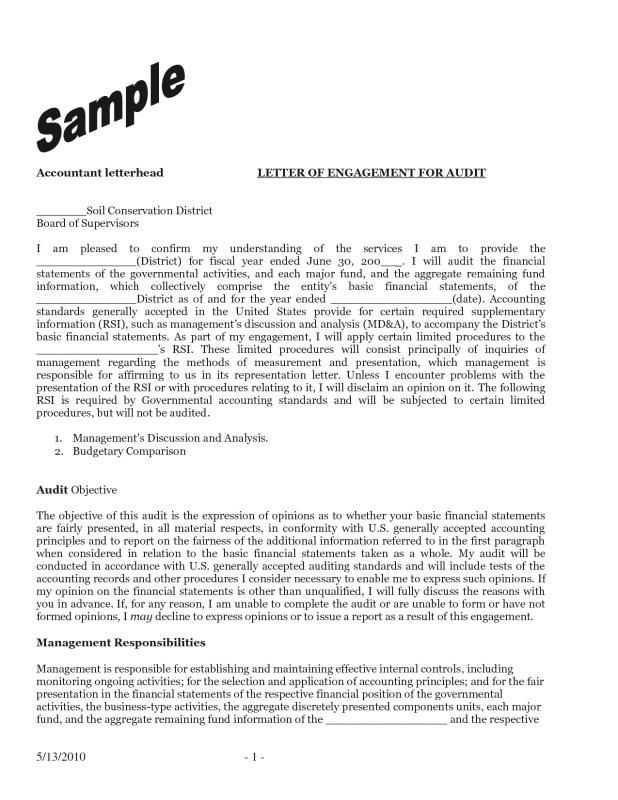
- Include communication preferences such as the preferred mode of contact (email, phone, etc.) and response times.
- Ensure that both parties understand their responsibilities regarding regular check-ins or progress updates during the engagement.
Steps to Review and Finalize the Engagement Letter
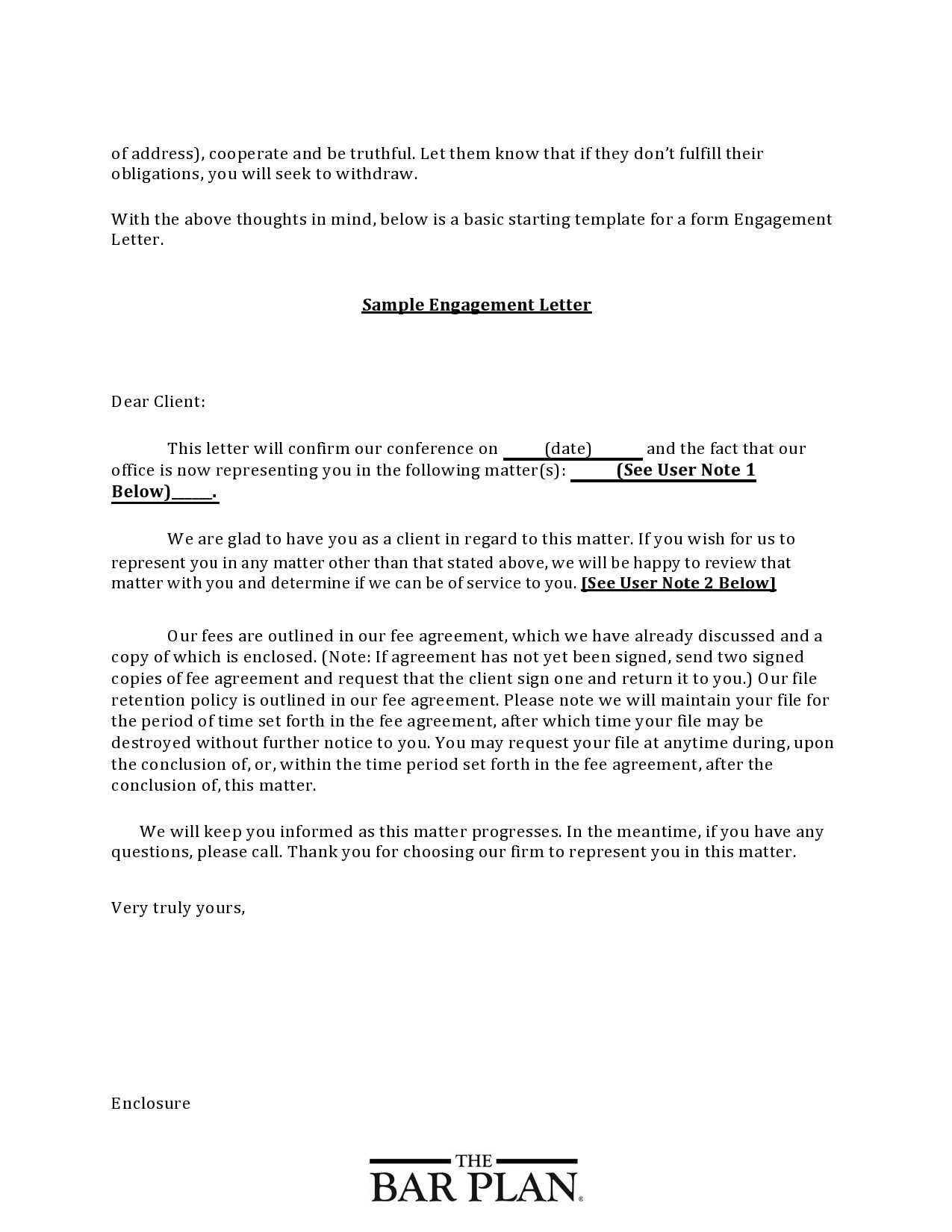
Review the draft engagement letter thoroughly to ensure clarity and accuracy. Start by verifying the client’s information, including names, contact details, and company specifics. Make sure all the dates and timelines align with your discussions. This reduces any chances of confusion later.
Clarify Terms and Expectations
Double-check the scope of services outlined in the letter. Ensure that all terms are clear and reflect the agreement made during initial conversations. Review payment terms, deadlines, and deliverables to avoid misunderstandings. Make sure any additional services or exclusions are detailed properly.
Review Legal and Compliance Aspects
Go over any legal language included in the letter, such as terms of confidentiality, indemnity clauses, and dispute resolution methods. Consult a legal expert if necessary to confirm that the letter complies with relevant laws and regulations. This is key to safeguarding both parties.
Once the document is verified and agreed upon, send it to the client for their review. Allow for adjustments if needed and ensure that both parties are comfortable with the final version. Upon agreement, sign and date the letter to finalize the engagement.